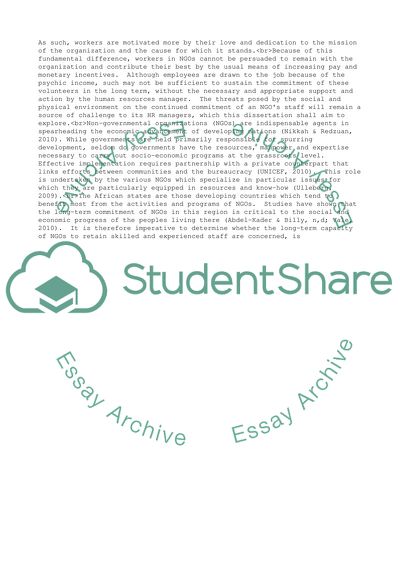Cite this document
(“Understnading Employee Engagement in the International NGOs: A study Thesis Proposal”, n.d.)
Understnading Employee Engagement in the International NGOs: A study Thesis Proposal. Retrieved from https://studentshare.org/management/1592650-understnading-employee-engagement-in-the-international-ngos-a-study-on-how-international-ngos-working-in-africa-engage-attract-and-retains-staff-workers-and-volunteers
Understnading Employee Engagement in the International NGOs: A study Thesis Proposal. Retrieved from https://studentshare.org/management/1592650-understnading-employee-engagement-in-the-international-ngos-a-study-on-how-international-ngos-working-in-africa-engage-attract-and-retains-staff-workers-and-volunteers
(Understnading Employee Engagement in the International NGOs: A Study Thesis Proposal)
Understnading Employee Engagement in the International NGOs: A Study Thesis Proposal. https://studentshare.org/management/1592650-understnading-employee-engagement-in-the-international-ngos-a-study-on-how-international-ngos-working-in-africa-engage-attract-and-retains-staff-workers-and-volunteers.
Understnading Employee Engagement in the International NGOs: A Study Thesis Proposal. https://studentshare.org/management/1592650-understnading-employee-engagement-in-the-international-ngos-a-study-on-how-international-ngos-working-in-africa-engage-attract-and-retains-staff-workers-and-volunteers.
“Understnading Employee Engagement in the International NGOs: A Study Thesis Proposal”, n.d. https://studentshare.org/management/1592650-understnading-employee-engagement-in-the-international-ngos-a-study-on-how-international-ngos-working-in-africa-engage-attract-and-retains-staff-workers-and-volunteers.


